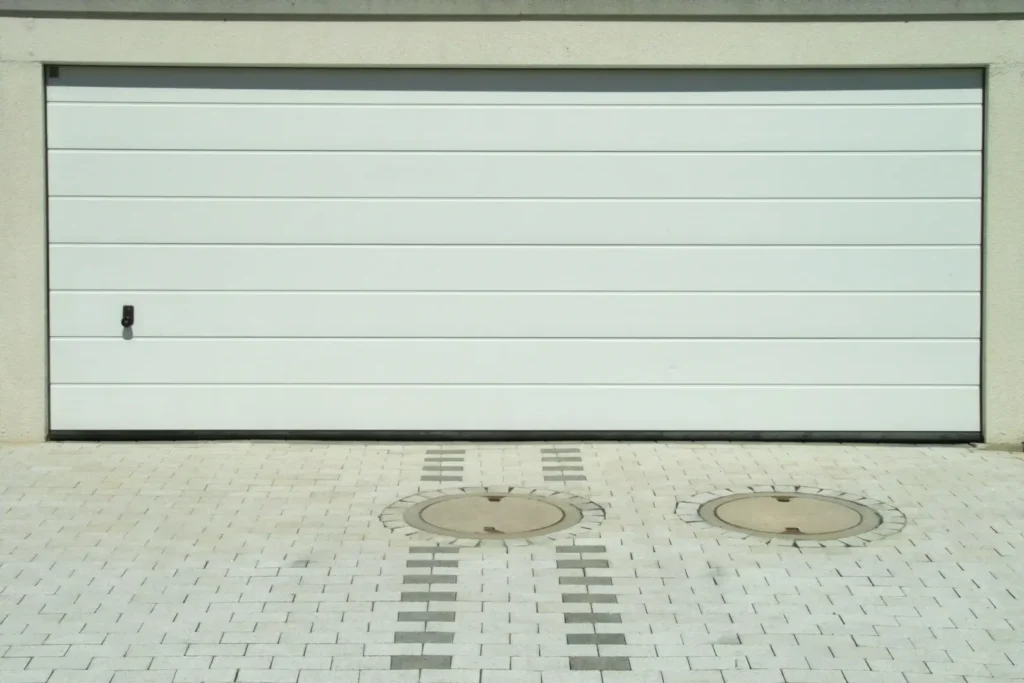If you have a garage, you know how cold it can get in the winter and how hot it can get in the summer. This can affect not only your comfort but also your energy bills, your car’s performance, and your stored items. That’s why garage door insulation is an innovative and cost-effective way to improve your garage’s temperature and energy efficiency. This blog post will show you how to insulate your garage door in 5 easy steps using standard tools and materials. You will also learn about the benefits of garage door insulation, the different types of insulation available, and some tips and tricks to make the process easier and more effective.
What are the Benefits of Garage Door Insulation?
Garage door insulation has many benefits, such as:
– Reducing heat loss and gain:
Garage door insulation can help keep the cold and warm air out during the winter and vice versa during the summer. This can lower your heating and cooling costs and make your garage more comfortable and livable.
– Protecting your car and stored items:
Extreme temperatures can damage your car’s battery, engine, tires, paint, and stored items such as tools, equipment, furniture, and electronics. Garage door insulation can help prevent these problems by maintaining a more stable and moderate temperature in your garage.
– Reducing noise:
Garage door insulation can also reduce the noise from the outside, such as traffic, neighbors, or weather. This can make your garage quieter and more peaceful, mainly if you use it as a workshop, office, or hobby room.
– Enhancing curb appeal:
Garage door insulation can also improve the appearance and value of your home, as it can make your garage door look more attractive, modern, and energy-efficient.
What are the Different Types of Garage Door Insulation?
You can choose from different types of garage door insulation, depending on your budget, preference, and garage door type. The most common ones are:
– Fiberglass insulation:
This is the most popular and widely available type of insulation, as it is cheap, easy to install, and effective. It consists of thin fibers of glass that trap air and create a thermal barrier. It usually comes in rolls or batts that you can cut and fit into the panels of your garage door. However, fiberglass insulation can also be itchy, dusty, and explosive. Hence, you must wear gloves, mask, and goggles when handling it and cover it with a fire-resistant material such as foil or vinyl.
– Foam board insulation:
This is another common and affordable type of insulation, as it is lightweight, rigid, and durable. It consists of polystyrene or polyurethane foam sandwiched between two layers of plastic or paper. It usually comes in sheets you can cut and attach to the inside or outside of your garage door. However, foam board insulation can also be bulky, brittle, and prone to moisture damage, so you need to seal the edges and joints with tape or caulk and protect them from water and sunlight.
– Spray foam insulation:
This is a more expensive and professional type of insulation, as it requires special equipment and skills to apply. It consists of a liquid foam that expands and hardens when sprayed into the gaps and cracks of your garage door. It can provide a high level of insulation, as it fills every space and creates an airtight seal. However, spray foam insulation can also be messy, toxic, and difficult to remove, so you need to hire a licensed contractor to do the job and wear protective clothing and equipment when working with it.
Check: Garage Door Supplier Buckeye AZ: Tips and Tricks for a Smooth Installation
How to Insulate Your Garage Door in 5 Easy Steps
Now that you know the benefits and types of garage door insulation let’s see how you can insulate your garage door in 5 easy steps. For this example, we will use fiberglass insulation, the most common and accessible type of insulation. However, you can also use foam board or spray foam insulation, following the same steps but adjusting the materials and methods accordingly.
Step 1: Measure Your Garage Door
The first step is to measure your garage door so you can buy the right amount and size of insulation. You will need to measure the height, width, and depth of each panel of your garage door and the total area of your garage door. You can use a tape measure, a pencil, and a paper to record the measurements. You can also take a picture of your garage door and mark the measurements for easier reference.
Step 2: Buy Your Insulation
The second step is to buy your insulation based on the measurements you took in the previous step. You will need to buy enough rolls or batts of fiberglass insulation to cover the entire area of your garage door, plus some extra for cutting and fitting. You will also need to buy some other materials and tools, such as:
– A utility knife or scissors to cut the insulation
– A measuring tape and a marker to mark the insulation
– A staple gun or adhesive to attach the insulation to the garage door
– A foil or vinyl facing to cover the insulation and protect it from fire and moisture
– A tape measure and a level to align the insulation and the facing
– A hammer and nails or screws to secure the facing to the garage door
You can find all these materials and tools at your local hardware store or online.
Step 3: Cut and Fit Your Insulation
The third step is to cut and fit your insulation according to the measurements you took in the first step. You will need to:
– Unroll or unfold the insulation and lay it flat on the floor or a table
– Use the measuring tape and the marker to mark the insulation according to the height, width, and depth of each panel of your garage door
– Use the utility knife or scissors to cut the insulation along the marked lines
– Fit the insulation into the panels of your garage door, making sure it covers the entire surface and fills the gaps and corners
– Use the staple gun or adhesive to attach the insulation to the garage door, making sure it is secure and snug
Step 4: Cover and Secure Your Insulation
The fourth step is to cover and secure your insulation using the foil or vinyl facing. You will need to:
– Unroll or unfold the facing and lay it flat on the floor or a table
– Use the measuring tape and the marker to mark the facing according to the height and width of each panel of your garage door, plus some extra for overlapping and folding
– Use the utility knife or scissors to cut the facing along the marked lines
– Align the facing over the insulation, making sure it covers the entire surface and overlaps the edges and joints
– Use the hammer and nails or screws to secure the facing to the garage door, making sure it is tight and smooth
– Use the tape measure and the level to check the alignment and the appearance of the facing
Step 5: Enjoy Your Insulated Garage Door
The fifth and final step is to enjoy your insulated garage door and reap the benefits of a more comfortable, energy-efficient, and attractive garage. You will notice the difference in the temperature, noise, and appearance of your garage, as well as in your energy bills, car’s performance, and stored items’ condition. You will also feel proud to complete this DIY project and save money and time.
Conclusion
Garage door insulation is an innovative and cost-effective way to improve your garage’s temperature and energy efficiency, protect your car and stored items, reduce noise, and enhance curb appeal. You can insulate your garage door in 5 easy steps using standard tools and materials, such as fiberglass insulation, foil or vinyl facing, and a staple gun or adhesive. You can also choose from different types of insulation, such as foam board or spray foam, depending on your budget, preference, and garage door type. Following this guide, you can insulate your garage door in a few hours and enjoy the benefits for years.







